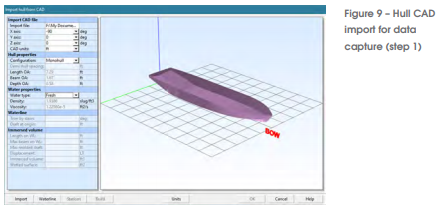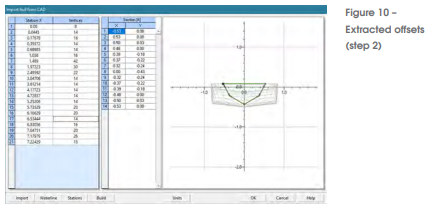Making designer-guided hydrodynamic hull form optimization part of the design process ensures it will be system-ready and benchmarked, argues HydroComp’s Don MacPherson
Design ‘optimization’ can be a two-edged sword. It can achieve substantial beneficial outcomes, but it can also consume design resources in a fruitless hunt for perfection. So, how do we proceed?
In naval architecture, where many disciplines – stability, hydrodynamics, capacity, producibility – all compete in the evolution of a design, design studies will never deliver a singular ‘numerically optimum’ outcome for any one discipline. Certain disciplines, such as safety of life at sea, will appropriately have priority to others. Depending on how you cast the role of a naval architect, the design priorities also fall on any task that best fulfills the objectives of a client’s business plan. The best we can hope for is to get reasonably close to an optimum while not handicapping the other disciplines too much. To do this we must set aside the idea of a single optimum for the task at hand and remember that there is typically a broad area of compromise options that achieve close to optimum outcomes. It is in this very messy sandbox that we gleefully approach hydrodynamic hull form optimization.
This article addresses how designer-guided optimization ripples through:
• Principal parameter optimization
• Hull form wave-making optimization
• Visualization of wavemaking energy
• Using longitudinal wave energy plots for designer guided optimization
• A RoPax Ferry example, and
• Data requirements & workflow.
Through the application of a ‘designer-guided’ optimization strategy, naval architects can evaluate proposed hull form geometry both in parametric and distributed volume domains. Only by keeping the naval architect in the design loop can the hull form geometry effectively be optimised for hydrodynamic objectives within the scope of competing disciplines. Of course, this does not eliminate the potential for additional improvements using higher-order CFD or model testing. In fact the opposite is true. By incorporating designer-guided hydrodynamic hull form optimization into a naval architect’s regular design process, the design will be system-ready, pre-qualified, and benchmarked. This makes additional follow-on analyses more effective by devoting resources where they are most useful – by calculating just what is needed, instead of using resources for a hull geometry that may prove to be restricted by the other disciplines of naval architectural design.
download the full article in the October 2018 issue of The Naval Architect.


